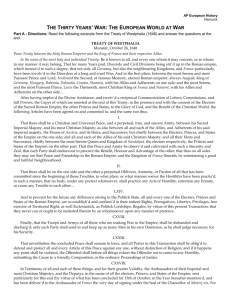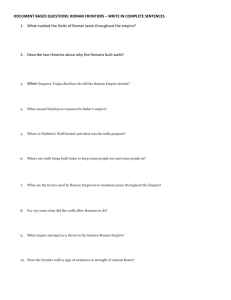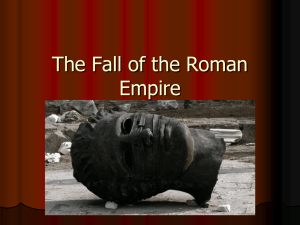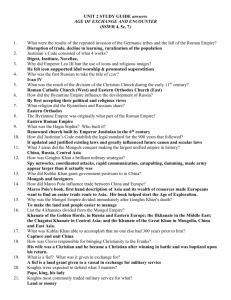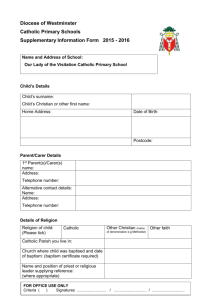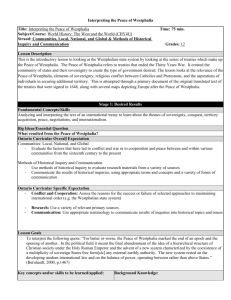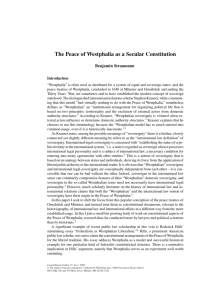Thirty Years War
advertisement
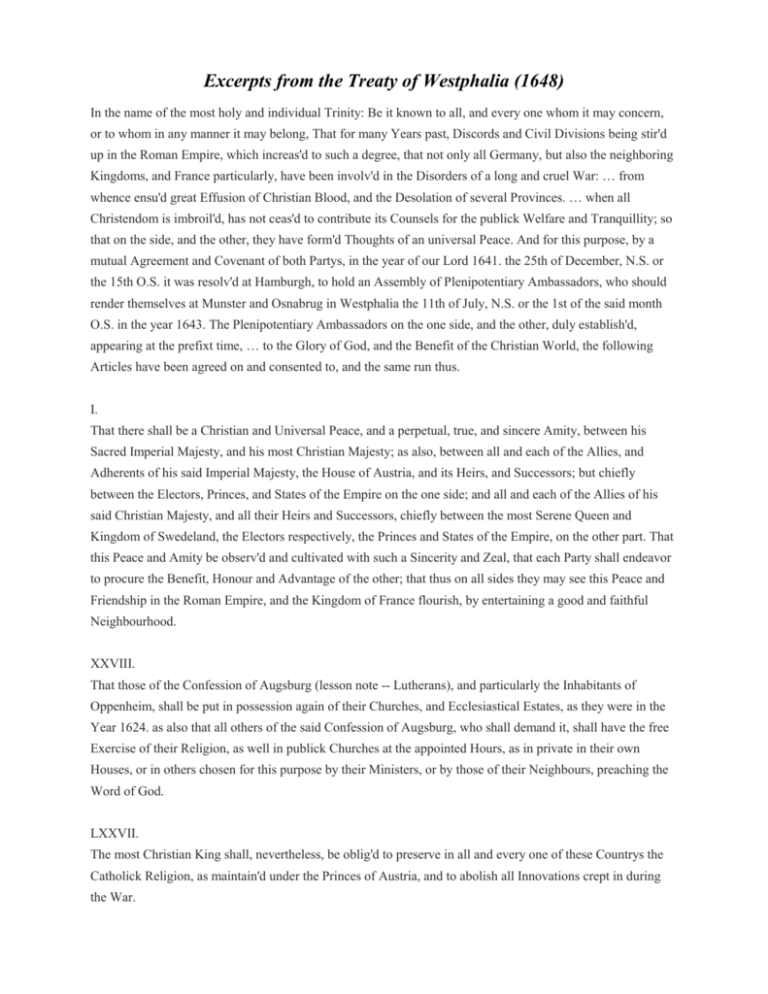
Excerpts from the Treaty of Westphalia (1648) In the name of the most holy and individual Trinity: Be it known to all, and every one whom it may concern, or to whom in any manner it may belong, That for many Years past, Discords and Civil Divisions being stir'd up in the Roman Empire, which increas'd to such a degree, that not only all Germany, but also the neighboring Kingdoms, and France particularly, have been involv'd in the Disorders of a long and cruel War: … from whence ensu'd great Effusion of Christian Blood, and the Desolation of several Provinces. … when all Christendom is imbroil'd, has not ceas'd to contribute its Counsels for the publick Welfare and Tranquillity; so that on the side, and the other, they have form'd Thoughts of an universal Peace. And for this purpose, by a mutual Agreement and Covenant of both Partys, in the year of our Lord 1641. the 25th of December, N.S. or the 15th O.S. it was resolv'd at Hamburgh, to hold an Assembly of Plenipotentiary Ambassadors, who should render themselves at Munster and Osnabrug in Westphalia the 11th of July, N.S. or the 1st of the said month O.S. in the year 1643. The Plenipotentiary Ambassadors on the one side, and the other, duly establish'd, appearing at the prefixt time, … to the Glory of God, and the Benefit of the Christian World, the following Articles have been agreed on and consented to, and the same run thus. I. That there shall be a Christian and Universal Peace, and a perpetual, true, and sincere Amity, between his Sacred Imperial Majesty, and his most Christian Majesty; as also, between all and each of the Allies, and Adherents of his said Imperial Majesty, the House of Austria, and its Heirs, and Successors; but chiefly between the Electors, Princes, and States of the Empire on the one side; and all and each of the Allies of his said Christian Majesty, and all their Heirs and Successors, chiefly between the most Serene Queen and Kingdom of Swedeland, the Electors respectively, the Princes and States of the Empire, on the other part. That this Peace and Amity be observ'd and cultivated with such a Sincerity and Zeal, that each Party shall endeavor to procure the Benefit, Honour and Advantage of the other; that thus on all sides they may see this Peace and Friendship in the Roman Empire, and the Kingdom of France flourish, by entertaining a good and faithful Neighbourhood. XXVIII. That those of the Confession of Augsburg (lesson note -- Lutherans), and particularly the Inhabitants of Oppenheim, shall be put in possession again of their Churches, and Ecclesiastical Estates, as they were in the Year 1624. as also that all others of the said Confession of Augsburg, who shall demand it, shall have the free Exercise of their Religion, as well in publick Churches at the appointed Hours, as in private in their own Houses, or in others chosen for this purpose by their Ministers, or by those of their Neighbours, preaching the Word of God. LXXVII. The most Christian King shall, nevertheless, be oblig'd to preserve in all and every one of these Countrys the Catholick Religion, as maintain'd under the Princes of Austria, and to abolish all Innovations crept in during the War. CXII. That the very Places, Citys, Towns, Boroughs, Villages, Castles, Fortresses and Forts which have been possess'd and retain'd, as well in the Kingdom of Bohemia, and other Countrys of the Empire and Hereditary Dominions of the House of Austria, as in the other Circles of the Empire, by one or the other Army, or have been surrender'd by Composition; shall be restor'd without delay to their former and lawful Possessors and Lords, whether they be mediately or immediately States of the Empire, Ecclesiastical or Secular, comprehending therein also the free Nobility of the Empire: and they shall be left at their own free disposal, either according to Right and Custom, or according to the Force this present Treaty ought to have, notwithstanding all Donations, Infeoffments, Concessions (except they have been made by the free-will of some State) Bonds for redeeming of Prisoners, or to prevent Burnings and Pillages, or such other like Titles acquir'd to the prejudice of the former and lawful Masters and Possessors. CXXIV. Done, pass'd and concluded at Munster in Westphalia, the 24th Day of October, 1648. Summary of the Thirty Years War It was the most destructive war in Europe’s history up to that point. Estimates vary, but most historians agree that at least six million Europeans died, mostly in the Germanic lands. It started out as a local squabble, but soon morphed into a conflict that would engulf the entire continent. Nation-states battled back and forth for supremacy and power. When it was over, devastation had laid waste to what had once been an idyllic landscape … and in the end there was no real winner. Exhausted from the bloodshed, the warring parties finally agreed to stop killing by declaring a draw. Nothing was solved. Looking back, the peace treaty they signed looks eerily similar to one that would end another conflict in 1918 … but this was not 1918. This treaty was signed in 1648, and the representatives were not at Versailles, but rather in Westphalia. This was not the end of the Great War, but rather the end of the Thirty Years War. The “Thirty Years War” was actually a series of different wars that were all settled by the Peace of Westphalia in 1648. At their core, the conflicts were about religion. For the first thousand years of Christianity, there had been only one church, generally called the “Christian” church by historians. The pope, leader of that church, lived in Rome and held immense power over the entire population in Europe. Over the centuries after the fall of the Roman Empire in 476, the church, called “Catholic” after the Great Schism with the Orthodox Church after 1054, flexed its control over monarchs and the nobility as well. By the high Middle Ages, the Catholic Church had developed an idea behind salvation that Christians had to earn their way into heaven. The first and primary part of this notion had to do with membership in the Catholic Church itself. Heretics, those who challenged church teachings, were also considered to be outside God, which in turn led to the excesses of the inquisition. On 31 October 1517, Martin Luther, a German monk and scholar, wrote his now famous “95 Theses”, a series of arguments against the excesses of the Catholic Church, and then (according to legend) nailed them to the Church door in the center of Wittenberg for all to see. His works, published in German on the new printing presses for all to read, led to an explosion of other reformers, and set the stage for the Protestant Reformation. In essence, Luther had opened the door for others to question the Church through different interpretations of scripture. In 1536, almost twenty years after Luther’s challenge, John Calvin, a French lawyer and theologian living in Geneva, Switzerland, published a book called Institutes of the Christian Religion. Originally published in Latin but subsequently translated into different European languages, Institutes outlined Calvin’s basic philosophies on what has been called “predestination” as a prerequisite for salvation. By the early 17th century, the European continent had split into two general camps. Protestants of various denominations (mostly Lutheran and Calvinist) dominated the Northern Germanic and Swiss lands while Roman Catholics maintained their hold on Southern Europe, France and Spain. The flashpoint was in the Holy Roman Empire, a loose collection of mostly Germanic independent kingdoms north of the Alps. That is where trouble started in 1618 when a local squabble erupted between Calvinists and Catholics in Prague. Sweden came to the defense of Northern Protestants against the Austrian Hapsburgs, a powerful Catholic family who controlled much of Southern Europe. France, a serious Catholic rival to Hapsburg rule in Europe (especially in the Netherlands), eventually got into the fray, ironically on the side of the Protestants. War raged year after year. Millions across the continent (mostly peasants) suffered terribly. Destruction was widespread as invading armies plundered and pillaged the Germanic lands. By the early 1640s, most European leaders were broke and tired of war. Negotiations for peace began in 1641, but it would take over seven years before a treaty was finally hammered out. In the end, most of the provisions of the Treaty of Westphalia (1648) dealt with land and money, but the most important points had to do with religion. Protestant princes and their lands were granted official recognition and the right to exist outside the Roman Catholic Church. The war was a draw … or was it? Official recognition forever broke the power of the pope to control monarchs across the continent (even in Catholic lands). It also was the first step towards the idea of freedom of religion, first for kingdoms / states and later for individuals, a concept westerners hold dear today. For historians and scholars, the Treaty of Westphalia marks the epochal division between the Medieval/Renaissance Age and the Modern Age of powerful independent states and the scientific revolution.

